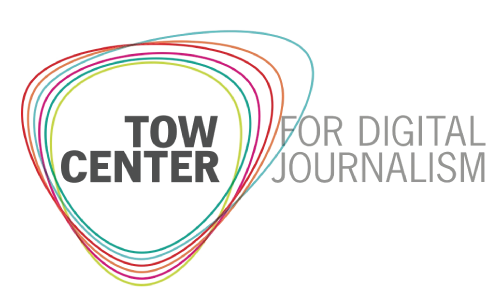In 2020, as many Black people around the world fought both anti-Black racism and COVID-19, the Black press in the US was dealing with another widespread problem: an infodemic. Editors of digital Black publications were on the front lines of dispelling racialized misinformation about the coronavirus while also reporting on protests for racial justice and the rising COVID-19 death toll that disproportionately affected African Americans. They produced editorial strategies that mitigated widely circulated myths and countered misinformation with factual public interest journalism.
We have examined some of the interventions through which leaders at digital Black publications sought to combat misinformation in a newly published Digital Journalism paper. For this research, which was partly funded by the Tow Center for Digital Journalism, we conducted semistructured interviews with eleven founders, top editors, or social media managers from thirteen top-ranked digital Black news outlets, as determined by Comscore, and a narrative analysis of these outlets’ websites, Twitter accounts, and Instagram accounts. The outlets were: Black Doctor, Black Sports Online, Bossip, Essence, The Grio, Love B. Scott, Madame Noire, NewsOne, New York Amsterdam News, Rolling Out, the Shade Room, The Undefeated (now Andscape), and Vibe. We chose interviews as a method of inquiry because we wanted to hear behind-the-scenes details from the editors, especially as they pertained to newsgathering, fact-checking, and ethical decision-making.
We also scraped content from these thirteen digital outlets’ website pages, Twitter accounts, and Instagram feeds from March 1, 2020, to December 31, 2020. We coded about 50 percent of our corpus, which comprised 11,329 website articles, 56,891 tweets, and 17,240 Instagram posts. Analysis of this data allowed us to dig deeper into what types of content these publications produced to correct inaccuracies and report on the truth.
The digital Black press used proactive and reactive tactics to combat misinformation
Digital Black press editors used both proactive and reactive tactics to combat misinformation. They proactively created articles and social media posts about celebrities’ COVID test results and published factual information about the virus and vaccines to educate their audience. Editors also used Facebook and Instagram Live to hold Q&A sessions with medical experts and provide their readers the opportunity to get direct answers to questions. Digital Black press outlets reactively published content refuting the misinformation some celebrities were spreading about COVID’s origins and treatment. Another reactive response was editors’ replying to potentially harmful comments with correct information or censoring comments when users made unfounded claims. Both of these approaches were essential and effective in providing comprehensive coverage of COVID and its effect on the Black community. We found that digital Black press editors used social media to both prevent and rectify misinformation by employing strategies that prioritized their audiences’ well-being.
The digital Black press limited their audiences’ exposure to misinformation
Many Black news outlets have limited financial resources, in comparison with their mainstream peers, which often results in smaller staffs. But despite these restrictions, the editors invested time in protecting their readers from nonfactual information about COVID-19 and the vaccines. Some editors restricted comments that they felt would harm their audiences. They took this approach—instead of deleting the offending comment—because it allowed the original poster to see the comment but hid it from other users. However, in an effort to conserve resources, some editors chose to remove potentially harmful comments from trolls outside of the Black community. Editors also shared that they eventually blocked users who continued to post problematic content. For some social media posts, Black press outlets turned off the comments completely because the volume of inaccurate information posted by users was too much to manage. This strategy allowed readers to focus on the correct content that was originally posted by the outlets.
The digital Black press revived public interest journalism
The digital Black press’s social media posts and website articles included COVID-19 safety guidelines, which worked to correct misinformation in a nuanced way. For example, digital Black press outlets shared factual information about symptoms, prevention, and social distancing. They also held Instagram Live, Facebook Live, and other online events where their readers could ask Black healthcare experts questions about COVID-19.
In addition, as federal and state relief became available, digital Black outlets informed African Americans about the Coronavirus Aid, Relief, and Economic Security (CARES) Act and stimulus checks. They also discussed the importance of mental health and how to access free or reduced-rate services; the hardship of paying rent during the pandemic (along with the landlords and celebrities offering rental assistance); and the uneven economic impact on Black small-business owners and how they could find relief. The more the Black press reported on the myriad ways that African Americans were affected by the pandemic in the US, the less likely it seemed that the pandemic was a hoax.
Black publishers often hooked their news audiences with celebrity angles. A top misinformation-aversion tactic upon which digital Black publishers relied was posting updates about Black celebrities’ health. Coverage of elite Black people’s susceptibility to the disease helped to dispel the Black immunity myth, and reinforced that the pandemic was to be taken seriously. Additionally, some publications chided celebrities when they were spreading misinformation directly on social media. The outlets often did this by writing on how African American social media users were speaking before correcting these celebrities’ unfounded claims.
The digital Black press expanded its content, yet remained on-brand
Perhaps one of the most notable observations in this study is how the digital Black press leveraged the instantaneous communication that Twitter and Instagram afforded, to interact with an audience that was afraid and grieving. There was a breach of the so-called “fourth wall,” where editors who usually appeared only on the masthead took positions in front of the camera for live video chats. Black press editors at entertainment-focused outlets pivoted from posting viral celebrity videos to producing original live Q&A sessions on social media. Additionally, some digital Black news outlets developed series of infographics that were shared widely online.
Many digital Black press outlets partnered with other organizations to amplify how COVID-19 was affecting the Black community. For example, The Undefeated partnered with the Kaiser Foundation, Black Doctor partnered with Facebook’s COVID-19 Resource Center, Rolling Out partnered with AARP and HBCUs, and Essence partnered with the American Medical Association. These partnerships provided digital Black publications with additional resources while enabling them to reach broader audiences.
Takeaways
The above strategies allowed Black press outlets to address misinformation from multiple angles and reach a diverse audience. Content appealed to readers interested in celebrities and soft news as well as those looking for more hard-news public service journalism. By centering Blackness in all of their coverage, editors were able to create posts that were more likely to resonate with their readers, as opposed to mainstream news content that was not Black-targeted. Given that African Americans trust the Black press more than mainstream outlets, the editors’ interventions were essential to informing and protecting a community that was disproportionately affected by COVID-19.
The full paper has been published in Digital Journalism. It can be found here.




